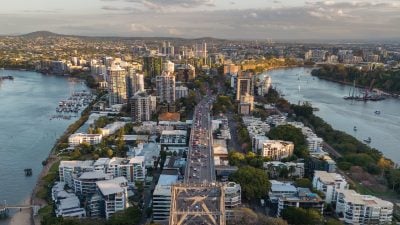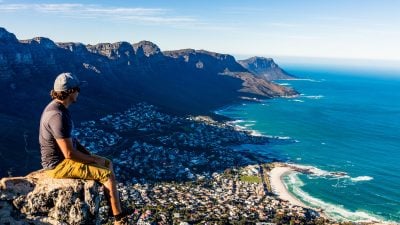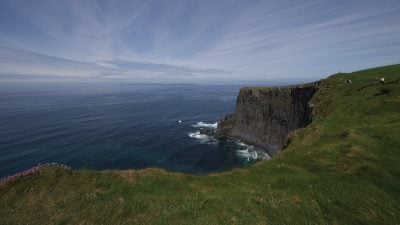Home / UK & Europe / Visit the City of Prague on a …
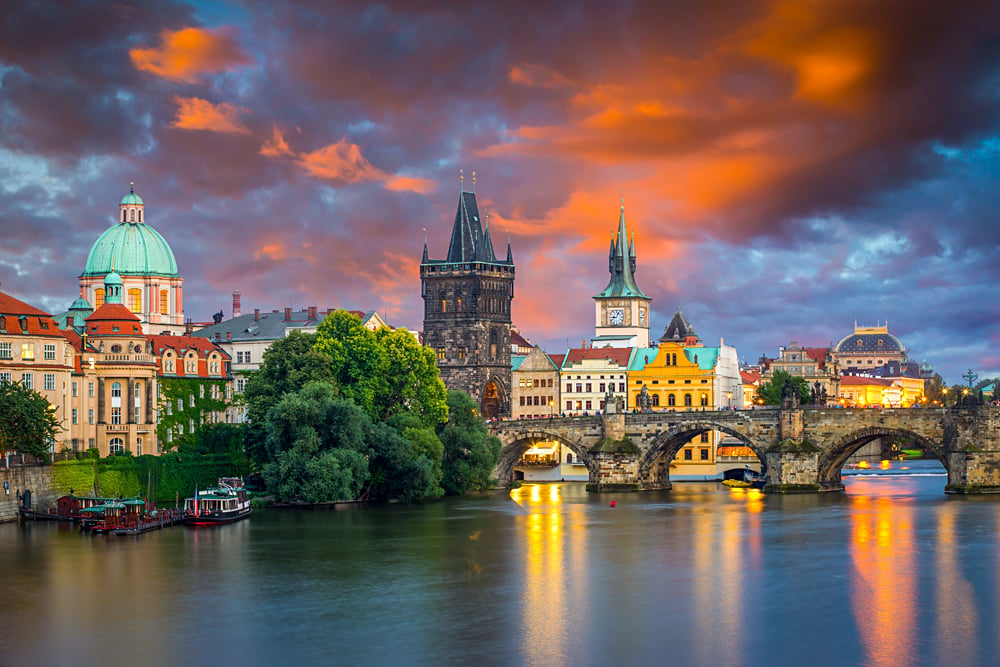
Visit the City of Prague on a Czech Republic Vacation
One of Central Europe’s gems, Prague attracts many visitors on a Czech Republic vacation, who inevitably succumb to the city’s mesmerizing charm.
On visits to Prague, I always come away with a question. How do you tell others who either have never been here or who are contemplating a Prague vacation, why they should go? Is it the architecture, the medieval ambience, the history or even the beer cellars? Try to put that into a short phrase. Better if I tell you about the highlights and let you come up with the answer.
I start with the river that splits the city in two. The Vltava (also known as the Moldau) inspired Smetana to write his composition, Ma Vlast (My Country) of which one movement is named after this river. It is the Vltava that helps create the beauty of Prague, with its 30 bridges and footbridges. You will find yourself perpetually crossing the river on a Czech Republic vacation, perhaps strolling along its embankment, or, if on an organized boat trip, taking in the sights.
Old Town (Stare Mesto)
The first place to start your exploration of Prague should be the Old Town Square, also known as Stare Mesto. This is one of Europe’s largest and most beautiful squares. Its history goes back to the 10th century and was, at one time, used as the city’s main marketplace. Today, everything happens here, from concerts to political meetings, and, in keeping with its history, Christmas markets. In the middle of the square is the Art Nouveau statue of Jan Hus. He was one of the most important personalities of Czech history who, 100 years before Martin Luther, was burnt at the stake in 1415 for his heretic reformist religious ideas. The Old Town Hall or Municipal House, dating back to the 14th century, is beautiful both inside and out. This Art Nouveau building features mosaics, sculptures, and stained glass.
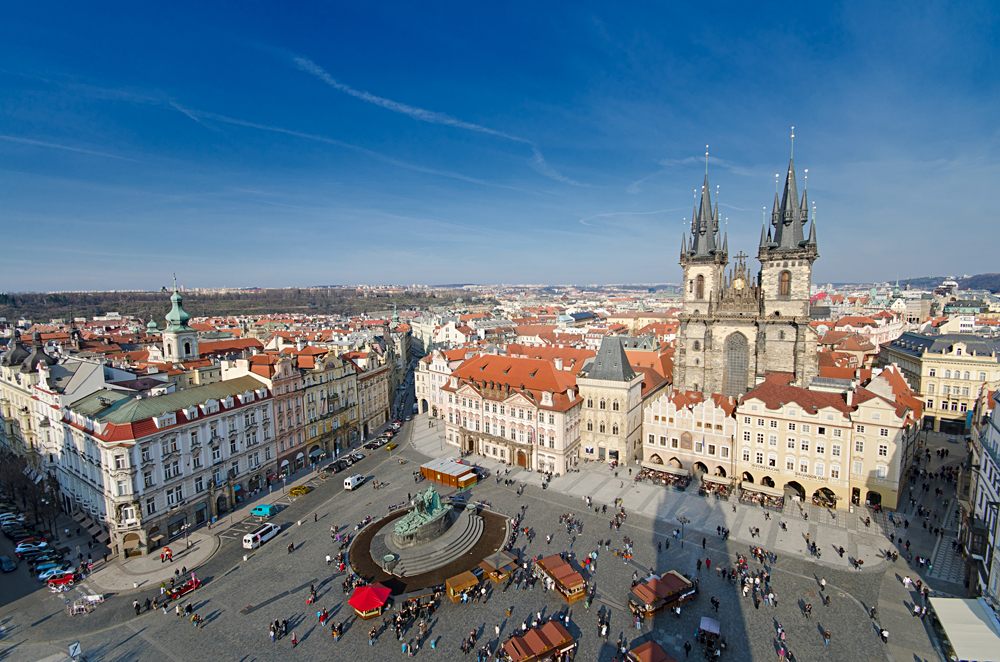
Most visitors will want to see the Astronomical Clock, part of the Old Town Hall, in action. This clock, dating back to the 15th century, on the hour, starts its performance. Figures on the sides of the clock come alive, after which two windows open up to reveal the Twelve Apostles greeting the city. On the sides of the clock, you see a skeleton ringing a bell, a Turk shaking his head, a miser with a purse full of money, and “Vanity” looking in a mirror. The performance ends with the crowing of a golden rooster and the ringing of the huge bell at the top of the tower. How could you miss all that?! Also in the square is the Church of Our Lady Before Tyn, a very impressive gothic church built in 1385. The spires and towers can be seen everywhere in the city. It is said that this church was the model for Walt Disney’s Sleeping Beauty castle. If you don’t want to drag yourself away from the square, you can also check out the National Gallery with its art collection, and the Baroque St. Nicholas Church.
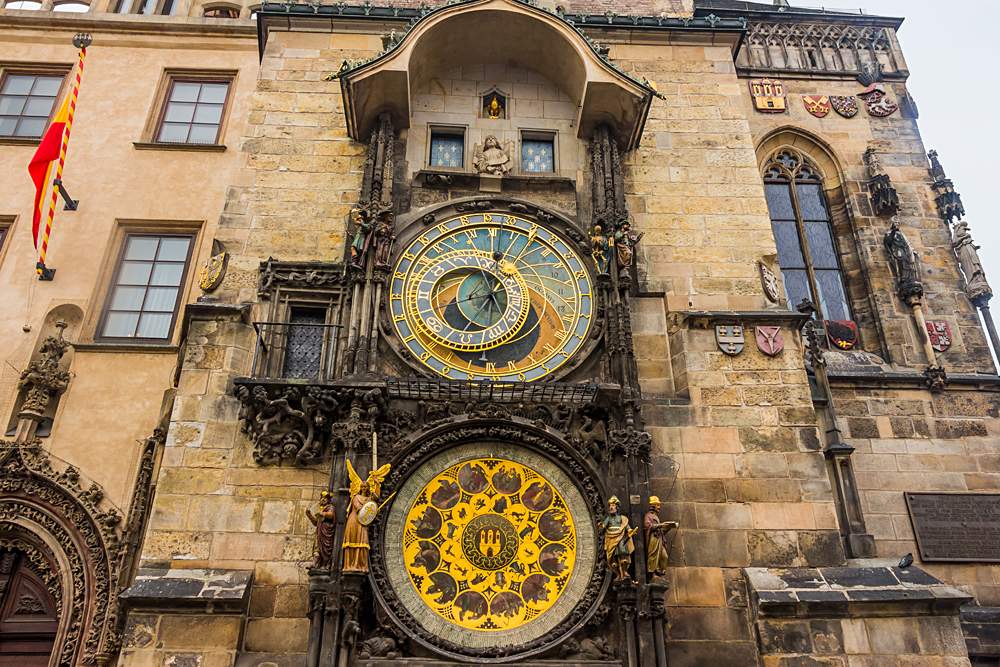
Charles Bridge
It’s now time to head over the river, on your Czech Republic vacation and, inevitably, you will cross via the pedestrian-only Charles Bridge, and for good reasons. This charming bridge, which was originally constructed in the 13th century and which connects the Old Town with the Lesser Town (just a name), was named after King Charles IV. Let’s describe why it is so popular. First, it has two towers which stand at each end of the bridge and which can be climbed for views of Prague. Then there are the 30 Baroque statues of saints positioned along either side of the bridge, originally put there in the 17th century although now, many of them are copies. The originals can be seen in the Lapidarium Museum. The most popular statue is probably the one of St. John of Nepomuk, a Czech martyr saint who was executed during the reign of King Wenceslas IV by being thrown into the Vltava from this bridge. There is a plaque to commemorate him. Try to visit the bridge for full effect at sunrise or sunset when it is much quieter.
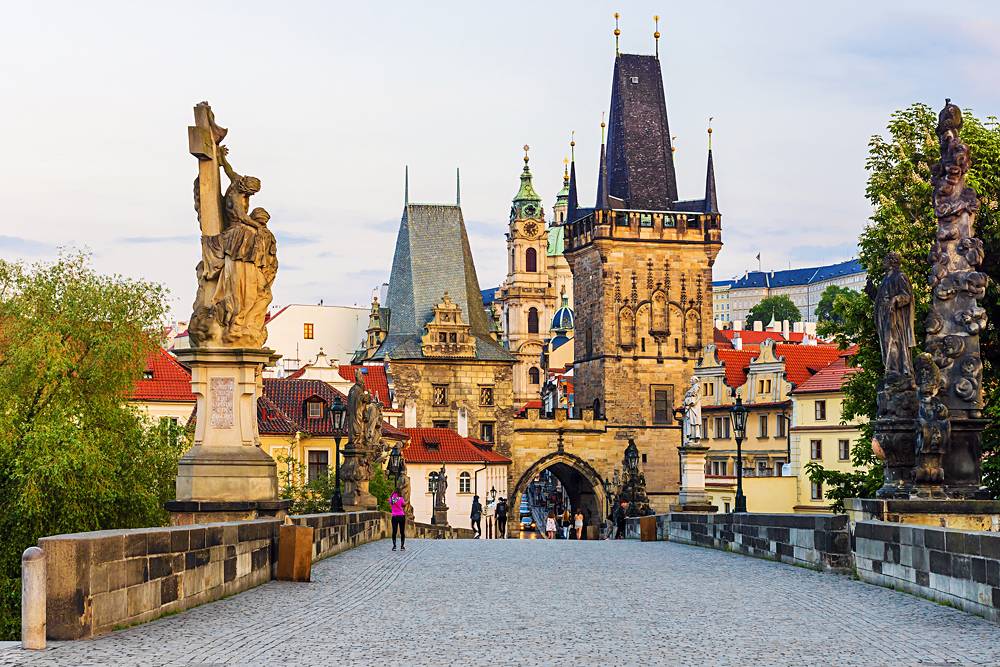
Lesser Town (Mala Strana)
Now you are in Lesser Town, also known as Mala Strana, which is situated at the bottom of the foothills of Prague. Your first impression on a Czech Republic vacation will be of the picturesque cobblestone streets and old houses. The heart of this district is Lesser Town Square where, along with the narrow side streets, you will find small shops, restaurants, and traditional Czech pubs. The Baroque churches and palaces that give Lesser Town its charm date from the 17th and 18th centuries. Check out the Wallenstein Palace, built in the 17th century by Italian artists, with its 5 courtyards and gardens, now occupied by the Czech Senate. The finest church here is St. Nicholas Church, with its priceless religious works of art.
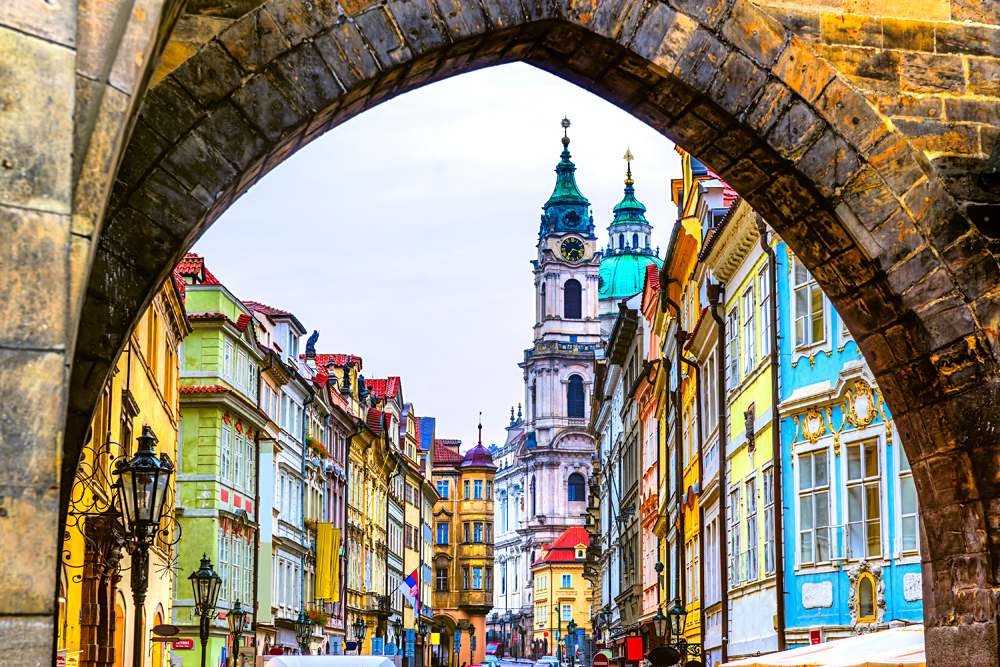
We now come to the most striking and imposing building in Prague – Hradcany Castle, also known as Prague Castle. This edifice stands out as it is perched on the top of a hill overlooking the river. It is extremely vast and is the largest castle complex in the world. Note the word, “complex.” It is made up of many components but, at first glance, it is a castle of the first order, measuring 570 metres/1,870 feet in length and 130 metres/430 feet in width. It has, over time, been the seat of power for kings, emperors, and presidents of the country and, today, it is the official residence of the President of the Czech Republic. It also contains the Church of the Virgin Mary, the St. George Basilica, and the Saint Vitus Basilica, one of the most beautiful in Europe. Then there is the Archbishop’s Palace, the residence of the archbishops of Prague, and the Schwarzenberg Palace, the most beautiful Renaissance palace building in Prague. Also, check out the Golden Lane. This quaint street in the precincts of the castle contains picturesque tiny houses that were inhabited by the defenders of the castle, as well as goldsmiths (hence the name), and servants. Number 22 was inhabited at one time by the famous writer, Franz Kafka.
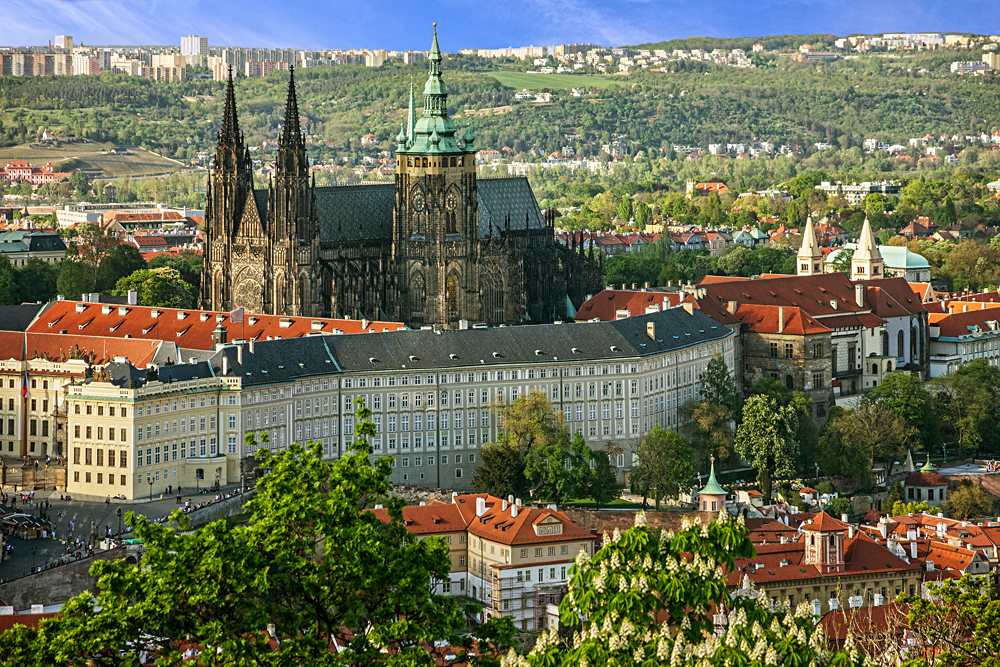
New Town (Nove Mesto)
New Town, or Nove Mesto, is both the business district and the entertainment district of Prague. On your Czech Republic vacation, it is also where you will find international hotels, many restaurants, cafes, and shops. However, don’t expect everything to be modern as it has a long history. The heart of the New Town is Wenceslas Square, an avenue almost a kilometre/half a mile in length. It is here you will find the hotels and shops plus houses that range in style from Classical to Art Nouveau and Neo-Gothic.
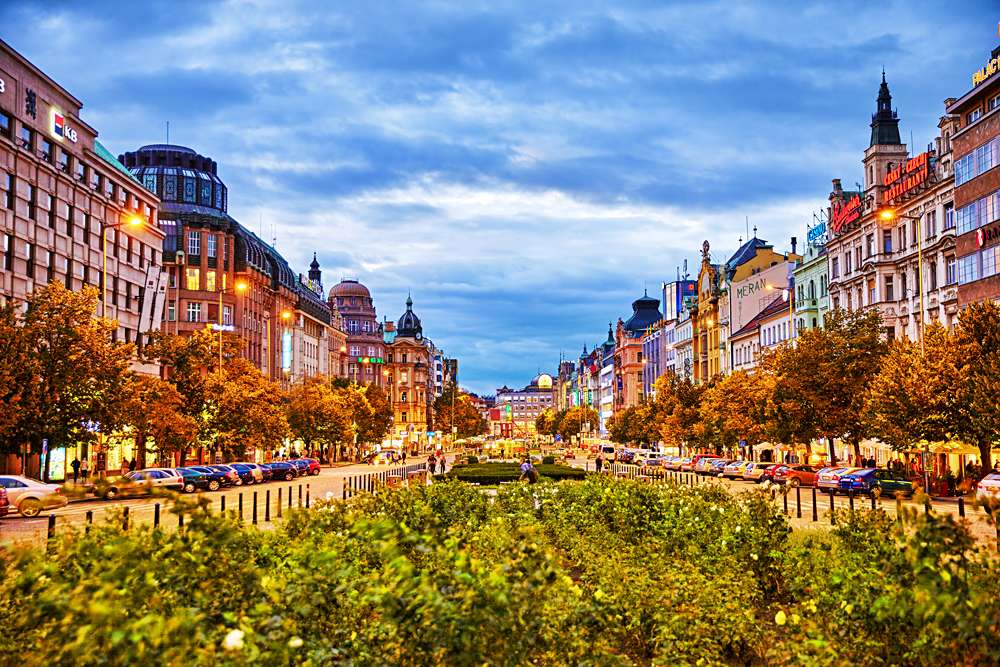
If you cast your mind back, there was a revolution against the communist regime in the Czech Republic in 1968. Wenceslas Square was at the centre of it. I remember on one visit, seeing bullet marks on the city hall, left as a reminder of that occasion. It was also the place where Vaclav Havel, in 1989, addressed the crowds from a balcony to advise that the communist government had resigned. At the top of this avenue is the National Theatre, which is Prague’s premier performance hall for opera and ballet. It is somewhat modeled on other opera houses such as La Scala in Milan and the State Opera House in Vienna, but less opulent. The interior, however, is very attractive. The lobby has a number of frescoes and the auditorium has a painting on its ceiling, as does the curtain, of allegorical figures.
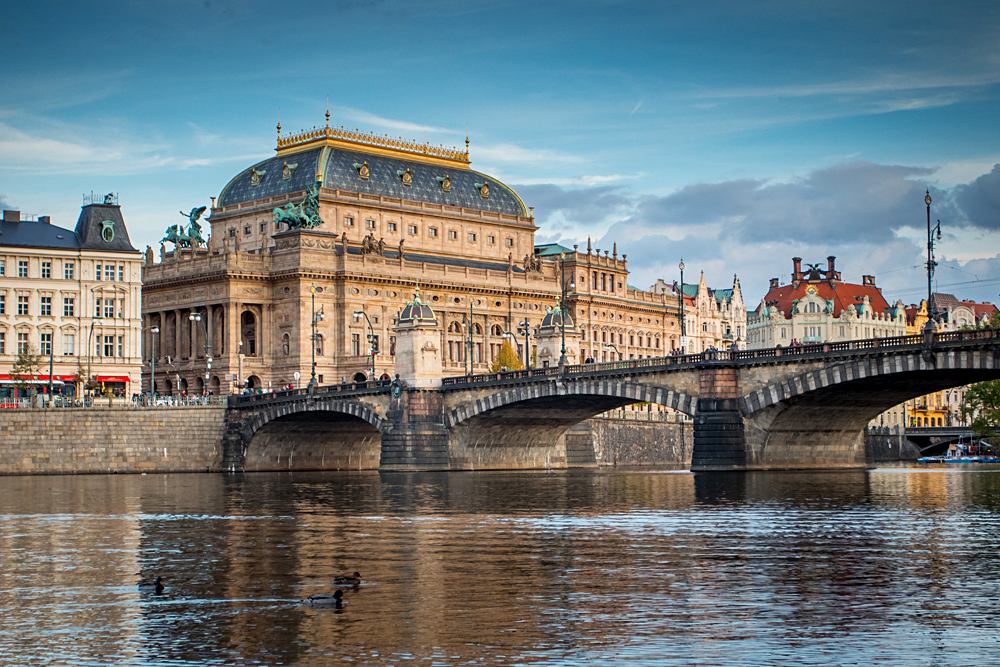
Also to be found in the New Town is the Municipal House, an ornate Art Nouveau-style building which contains the Dvorak Concert Hall, the largest in Prague. Next to it is the imposing Powder Tower, built in 1475 and used to store gunpowder in the 17th century, hence the name. On its façade are some exceptional statues of 15th Century Czech kings.
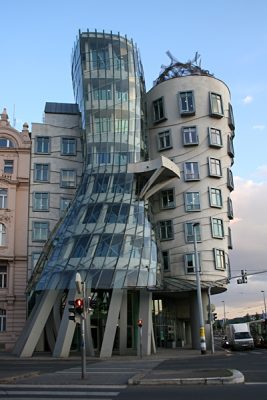
When it comes to the subject of music, check out these two places. The first is the Reduta Jazz Club, which contains a photo of Bill Clinton playing the saxophone during a visit in 1994. The other is the Dancing House, also nicknamed “Fred and Ginger,” designed by Czech architects in conjunction with Frank Gehry in 1996. It is, architecturally, vastly different from the surrounding buildings. It was, in fact, Frank Gehry who named the house after Fred Astaire and Ginger Rogers because it resembles a pair of dancers. It is supported by 99 concrete panels, each a different shape and dimension.
One more building to check out in New Town is the Zofín Palace, where Smetana’s My Country was first performed in 1882, and where Dvorak held his first concert in 1878. It is now a cultural centre and a venue for concerts, balls, conferences, and exhibitions. The Olsany Cemetery is where you will find the grave of Jan Palach, the revered hero student who, in 1969, committed suicide by setting himself alight to protest the communist regime.
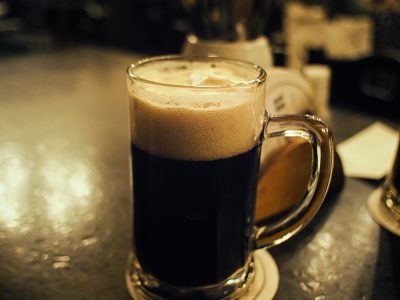
If, after exploring the New Town on your Czech Republic vacation you find you are ready for some refreshment, you could do worse than visit U Fleku, probably Prague’s best-known microbrewery and beer emporium. It is said that this pub was founded in 1499, so should be the oldest one in Prague. There is a beer garden plus 8 rooms to choose from, seating up to 1200 customers. Expect to sit at long wooden tables and possibly be occasionally serenaded by strolling musicians. There is also a museum explaining the brewing process which includes a beer tasting.
Prague Neighbourhoods
In order to get to know a city, I always recommend getting off the usual popular tourist track and go where the locals live and entertain themselves. One neighbourhood to check out is Vinohrady, which translates as “vineyards.” This is one of the “in” districts of Prague, filled with cafes, restaurants, and parks. If you are looking for a charming, European neighbourhood with an artsy slant, then Vinohrady is for you. Another neighbourhood is Zizkov, a district attracting students, artists, and musicians. Because it has so many pubs, it has been said that “the unofficial currency in Zizkov is beer.” However, it is not all about pubs, as there are plenty of cafes and art galleries. Zizkov is where you will find the New Jewish Cemetery, which provides space for approximately 100,000 graves and which contains the grave of Franz Kafka. You will also find here the Zizkov Television Tower, with its observation decks offering great views of the city.

Prague’s Museums
Prague’s cultural institutes can keep you very busy on your Czech Republic vacation. Here are a few of the many which might appeal. The Franz Kafka Museum in Lesser Town is dedicated naturally to the work of this great Jewish author through photographs, diaries, documents, and letters. The Antonin Dvorak Museum, located in New Town, is dedicated to the great Czech composer, again with displays of photographs, newspaper cuttings, programmes, and personal effects including his viola and piano. Concerts are held here regularly as well as seminars, lectures, and exhibitions.
The Museum of Communism, again in New Town, tells the story of Czechoslovakia’s time behind the Iron Curtain through photographs, videos, propaganda posters, and everyday items collected from around the city.
A visit to the Jewish Museum in the Jewish Quarter includes the Maisel Synagogue, founded in 1592 with exhibits detailing the history of Jewish communities from the 10th to the 18th century, the Spanish Synagogue, with its continuation of the history from the 18th century to the present day, plus other equally interesting synagogues. Also included is the Jewish Ceremonial Hall, with exhibits about Jewish customs and traditions, and the atmospheric Old Jewish Cemetery, which was founded in the 15th century. It is the oldest surviving Jewish burial ground in the world and one of the most important historical monuments in the Jewish Quarter.
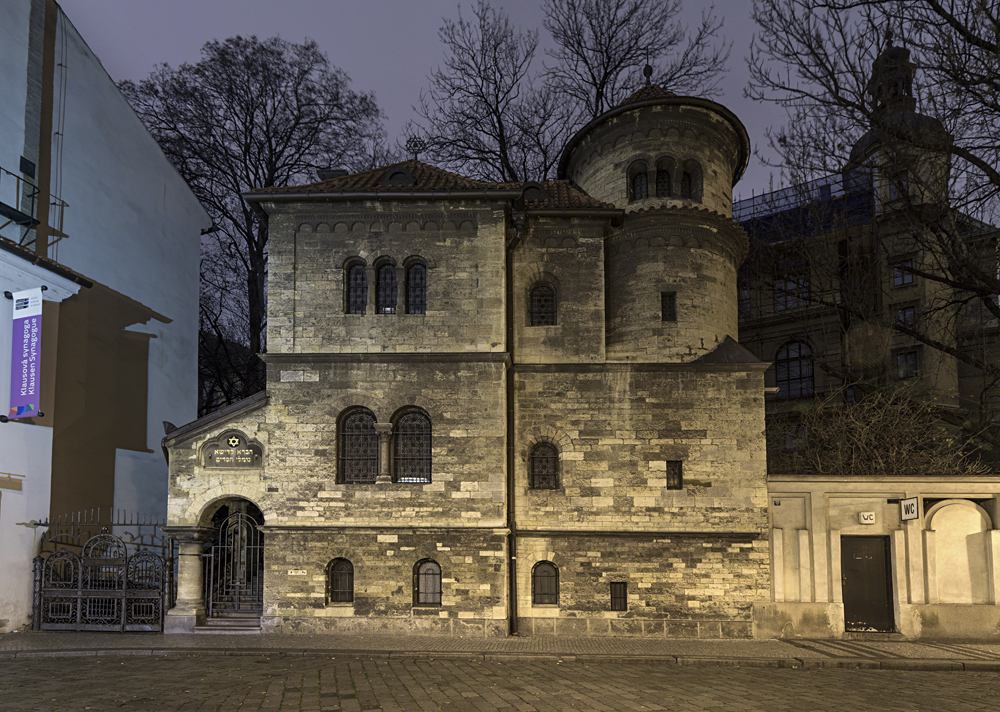
A different type of museum is the Karel Zeman Museum dedicated to the Czech movie director who, in the 1940s and 1950s, liked to use visual effects, and whose movies such as The Fabulous Baron Munchausen, were full of very sophisticated and innovative visual tricks. You get the opportunity here to try tricks that he used in his movies with your own camera or camcorder.
Not a museum as such but, if in Prague on a Czech Republic vacation, do seek out David Cerny’s statues. These larger-than-life creations by Cerny (born 1967), the country’s most famous sculptor, are amusing and at the same time, weird and controversial. The country’s most famous sculptor has a knack for simultaneously amusing and offending the public. Many of his weird and controversial sculptures remain on display throughout the city, including Babies (10 enormous and rather creepy infants that crawl up the Zizkov Television Tower), Piss (two male figures that urinate in a puddle, spelling out quotations from Czech literature), Head of Franz Kafka (a kinetic sculpture made of 42 moving panels, a horse statue in Wenceslas Square with a rider sitting on an upside down horse, a statue of Sigmund Freud swinging from a beam with his hand in his pocket, and many others.
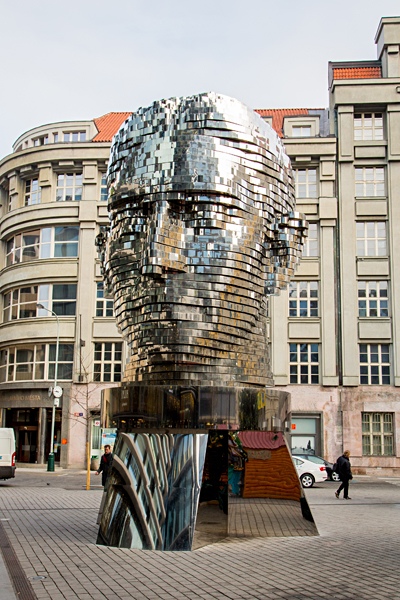
Terezin Concentration Camp
Terezin is a town not far from Prague, also called Theresienstadt. This concentration camp was used from 1941 to 1945 by Nazi Germany as a walled ghetto and also as a transit camp for Western Jews en route to Auschwitz and other extermination camps. It is famous for a collection of works of art and poetry referred to as I Never Saw Another Butterfly, which were created by Jewish children who lived in the concentration camp. There is a book of the same name based on a poem written by a young man who was incarcerated in Terezin and who died in Auschwitz. Most inmates were Czech Jews, but there were others from Germany, Austria, the Netherlands, and Luxembourg.
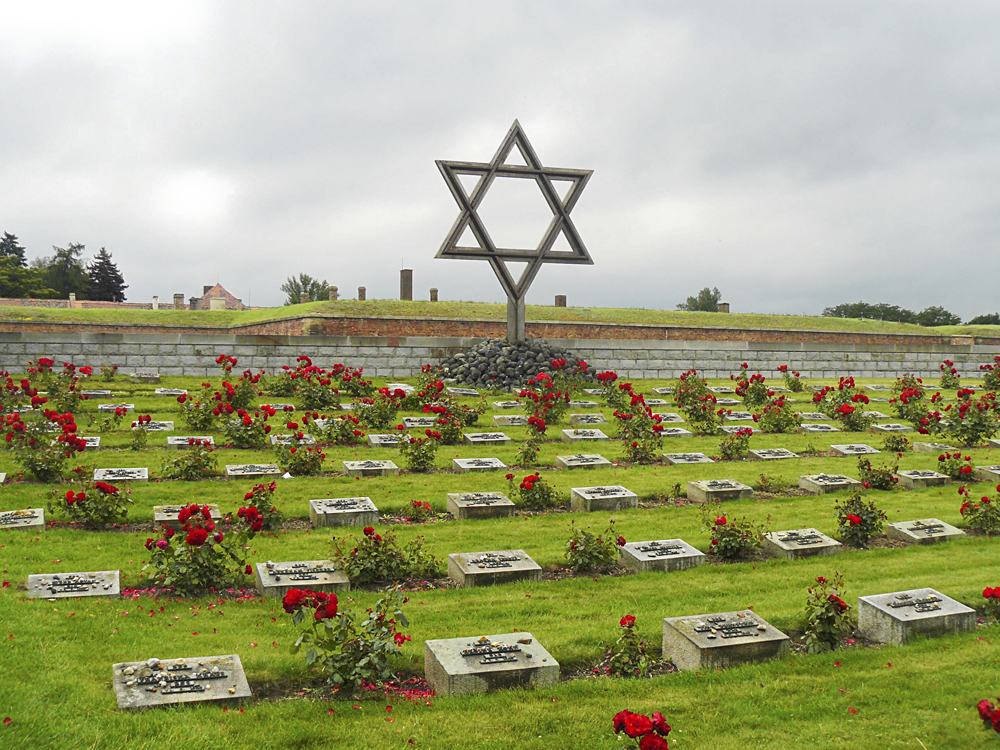
Hopefully, the above information will make you want to consider a Czech Republic vacation and a visit to Prague, because it really is a city which cannot fail to impress.
Get more travel inspiration by email.
Subscribe
0 Comments

Get the latest travel trends & hear about the best deals on vacations around the world.
If you’re a Globetrotter, these are the newsletters for you!

